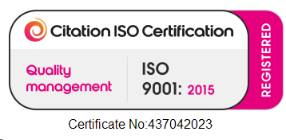Safety Tips – If you’re working within the shipping industry, you’re conscious of the importance that the proper packaging medium carries when a sensitive or dangerous material must be transported. There are an awesome number of containers that are designed for the only purpose of shipping certain compounds. However, it’s simply not enough to drop the materials within the container and leave them at that. You would like to be cognizant of the packaging materials that you simply are using.
One of the most important things businesses don’t realize when it involves the utilization of packaging materials is that they’re not necessarily safer than the components of the package. In fact, if you’re not careful, the packaging materials that you simply are using – or the way that you package materials – could lead on to a contamination or a failure to stay the fabric within the package fully secured.
Here are 5 important safety tips that companies got to confine mind once they are packaging materials for shipping and handling:
Wrap Each Item Separately
If you’re during a situation where multiple products got to be included during a package, it’s important that every item has its own individual layer of protection. Frequent contact during handling will increase the probabilities that something breaks upon arrival to the ultimate destination. Wrapping the product wisely is a pivotal factor for moving goods from one place to another. There are several ways and means you can do this. You can bubble wrap the item for 3-4 rolls or you can fill the inside of the container with cushion. Wrapping is as important as transporting the materials. Each material would require a different type of wrapping technology. You should be able to distinguish what is for what and which method is for which.
 Use Multiple Layers of Packaging
Use Multiple Layers of Packaging
Typically, products are distributed in three layers of packaging. First, there’s the packaging employed by warehouses where multiple products are shipped in big boxes to warehouses for further distribution. Subsequent layer would be the distribution packaging, and this is often the one that a customer would see when it’s delivered to their door. Finally, there’s the buyer packaging, where the individual item itself is bound up. You’ll prefer to have more layers than this, but the premise is to supply multiple layers during which the merchandise is protected.
At times it is true that the more layers of packaging, the more protection we could give. But we should also make sure that the unboxing process isn’t a nightmare. The experience of unboxing a pack is as important as wrapping it.
The Packaging Materials You Use Should Be Shock Resistant And You Must Cushion The Product.
If you’ve got ever seen packaging peanuts or foam-based structures in any package you’ve got opened, then you’ve got seen this instance in action before. These materials allow the product(s) to remain braced within the box and protect it from any sudden shocks. They also stay immune to the product’s weight by keeping its shape and not compressing over time.
These kinds of materials are extremely useful when there are multiple products being put in a single package. By keeping a distance of two inches between each item and faraway from the walls of the box, the products are shielded from one another and any external factors which may arise.
Always use Climate and Containment Resistant Packages
If suppose the packaging you want to ship through a specified route undergoes variable changes in temperature, pressure, humidity or respective natural and artificial changes, then it is widely possible for the materials used for cushioning will go under severe undesirable changes. This might lead the product itself to be damaged at times, which is a nightmare for business. The cushioning could lose its resilience, and therefore the product might degrade. The same principle also is applicable for the businesses that constantly receive materials or have goods transportation. You’ll get to create a special procedure that permits you to check and analyse for common packaging contaminants so as to avoid spreading them around your facility. This needs tests to be done by certified and qualified providers while implementing preventative measures that stop chemical contaminations from occurring.
This climate factor could be varying. It could be cold during one half of the transportation of the good and the other have the item could go through a humid temperature. A suitable operative packaging is required and the knowledge of its route and its weather condition should be known.
 Avoid the utilization of Excess Labels
Avoid the utilization of Excess Labels
If you’re transporting something, which will be dangerous to the person receiving and using it, they have to understand what’s in your box and precisely how it should be handled. This may be difficult for them to deduce if you’ve got multiple on your box directly. To form this process easier and safer for the recipient, have one label or two that dictates everything they have to understand.
If you’ve got any additional boxes within the package, it’s permissible to possess one label for those boxes. Only put down the security and handling information that the recipient must absolutely know, and zip more.
Using the proper packaging materials for the work is merely half the battle. The opposite half involves putting safety measures in situ that ensures safety standards are met while it’s being handled by forces that are beyond your control.
In the end of the day, taking special care of your methodology for packaging materials will prevent tons of wasted time and money that ought to not be spent within the first place.


